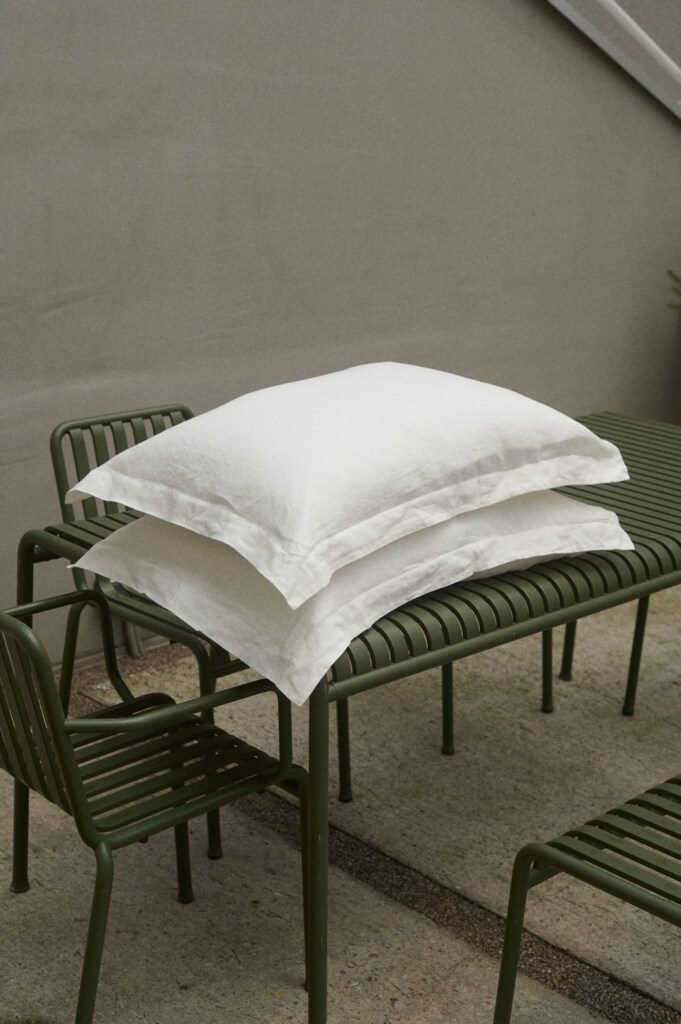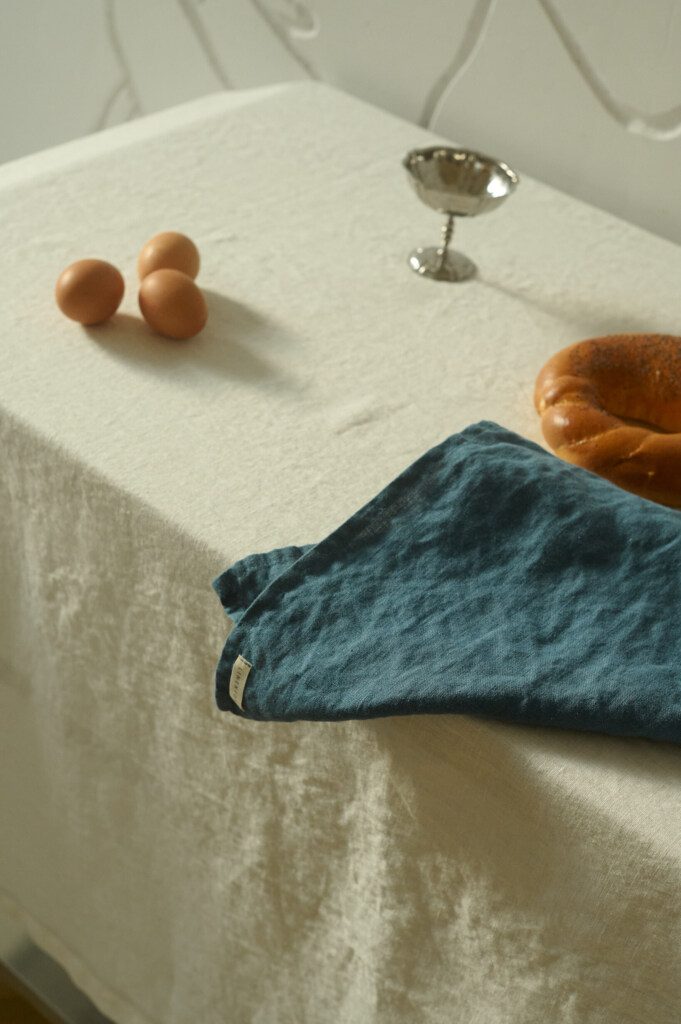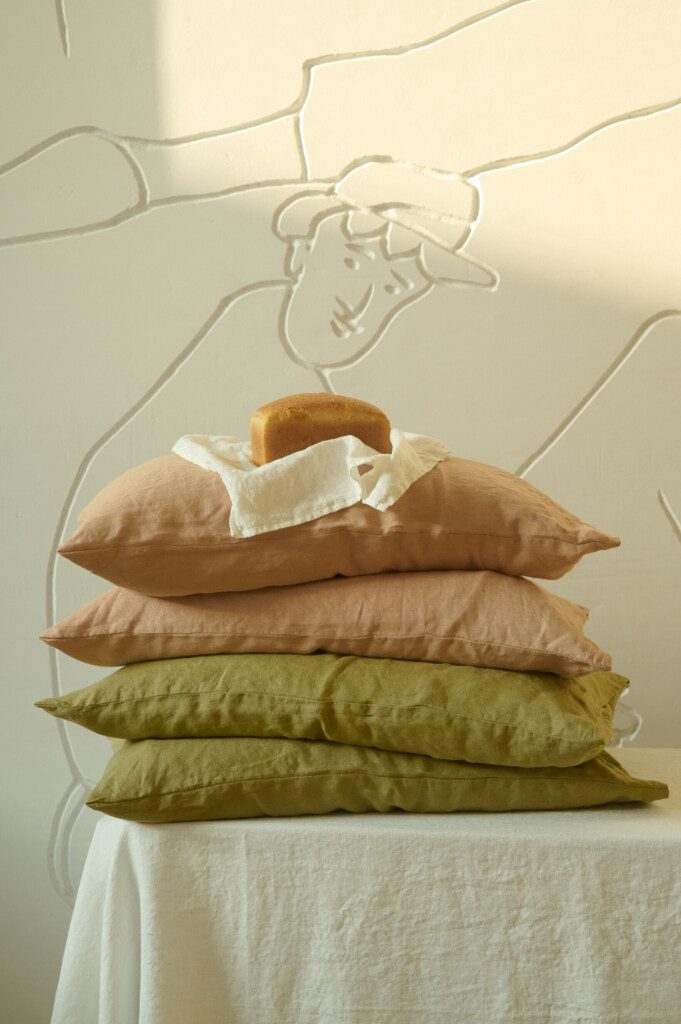Your Cart
You are €100 away from free standard shipping.
You are €100 away from free standard shipping.
We cover all U.S. tariffs, so you won’t pay extra customs fees.
If you’ve ever fallen in love with linen clothing, you’ve probably noticed —it tends to wrinkle. And honestly? That’s part of its charm. Each fold and crease tells the story of a natural fabric born from flax, a humble plant that’s been keeping people cool, comfortable, and elegant for centuries.
Linen doesn’t try to be perfect — it bends, softens, and moves with you. It’s a fabric that celebrates texture, movement, and the beauty of imperfection.
But why does linen wrinkle in the first place? Let’s dive into the reasons behind this fabric’s natural character — and why those wrinkles might just be its best feature.

Unlike synthetic fabrics that snap back into place, flax fibers have low elasticity — meaning they don’t “forget” when you bend or fold them. Sit, stretch, or give someone a hug — your linen garments will remember the moment. This quality comes from the structure of the flax plant, which produces long, strong, but inelastic fibers. That’s why linen clothing naturally wrinkles, unlike stretchier fabrics like cotton or synthetics.
But those same strong, unyielding fibers are what make linen drape so gracefully — a reminder that this fabric is alive in its own way.
Linen is breathable and highly absorbent fabric, which is why you stay cool in linen even when the sun is relentless. However, this same property contributes to wrinkling. When linen absorbs moisture — from humidity, body heat, or sweat —it expands and shifts, creating those signature creases.


Linen begins with the flax plant, which grows tall and strong. From seed to woven cloth, the process is simple and sustainable — unlike synthetics that need factories and chemicals to exist, linen just needs soil, sun, rain, and a good spin.The result is a natural fabric that’s breathable, biodegradable, and rich in texture.
In fact, linen sometimes carries tiny plant traces woven right into the fabric — a beautiful reminder of its origin. It reacts gently to washing, heat, and movement because it’s real, not synthetic. So, don’t fight the folds — embrace them. Every crease is a quiet nod to craftsmanship, nature, and a life well-lived in linen.
Each fiber is rich in cellulose, a natural compound that gives linen fabric its structure, crisp drape, and gentle sheen. Flax fibers are long and strong — nature’s built-in reinforcement — which is why linen clothing lasts for years and only gets softer with time.
The high cellulose content also allows linen to breathe, wick away moisture, and feel cool against the skin. In short, flax and cellulose make linen both tough and tender — the perfect balance of durability and comfort.
Among all natural fabrics, linen stands in a category of its own. While cotton is soft, silk is smooth, and wool is warm, linen combines strength, breathability, and ease like no other. It’s thicker and sturdier than cotton, giving it a beautiful texture and natural drape that feels both relaxed and refined.
Unlike silk, linen fabric doesn’t demand delicate care. It actually gets better with every wash, softening and relaxing over time. And because linen is light and breathable, it keeps you cool instead of trapping heat like wool.
Wrinkles are part of linen’s charm, but a little care goes a long way in keeping your pieces fresh and smooth. The key is to treat linen clothing gently — avoid harsh heat, over-drying, or tight folding. With the right washing, drying, and storage habits, your linen garments will stay relaxed, soft, and effortlessly beautiful for years to come.
Wash linen fabric in cool or lukewarm water (30-40C) on a gentle cycle with a mild, eco-friendly detergent. Avoid bleach or softeners — linen loves simplicity. In addition, avoid tumble drying to prevent color fading.
Give each piece room to move in the wash, then shake it out gently before drying. Air drying is best, but if you use a dryer, choose a low heat setting and remove the garment while it’s still slightly damp. This helps prevent deep creases!


Iron linen garments while they’re still a little damp — it’s easier to smooth out wrinkles this way. Use medium heat with steam, and press on the inside of the fabric to protect the surface. If you prefer a more natural look, skip the iron and use a fabric steamer instead.
Store linen clothing in a cool, dry space where it can breathe. Avoid plastic bags or tight containers that trap moisture. Fold loosely or hang your linen pieces on padded hangers to help maintain their shape. Before wearing again, a quick steam or light misting will refresh the fibers instantly.
Linen isn’t just fabric — it’s a little piece of nature you can wear. Woven from flax and full of character, it softens, folds, and moves right along with you. Don’t stress the wrinkles — they’re proof you’re living in your clothes. Wash it gently, wear it often, and let your linen clothing tell its story, one beautiful crease at a time.